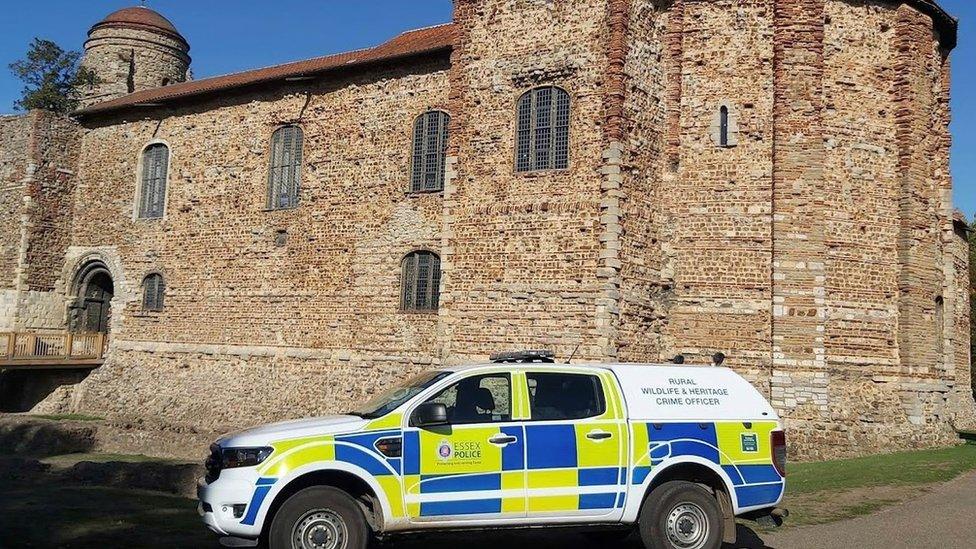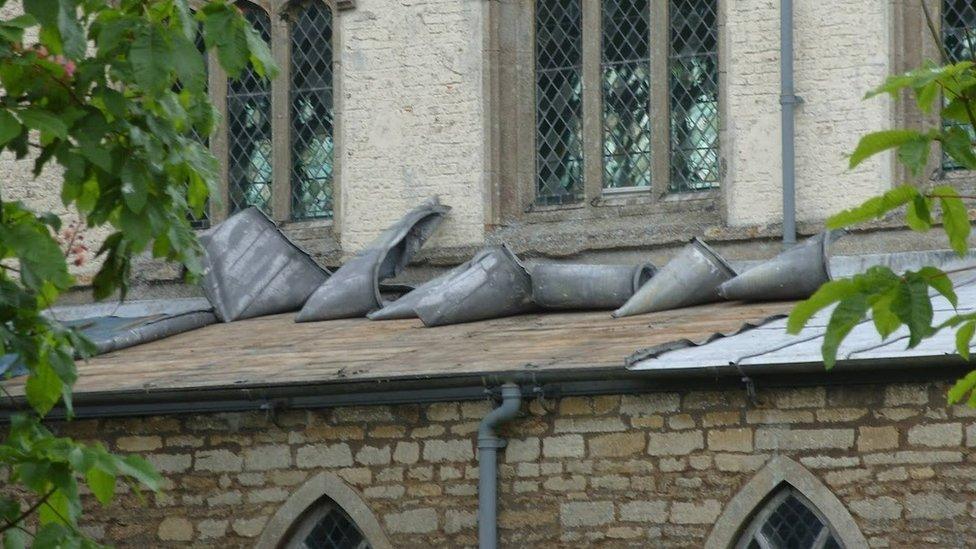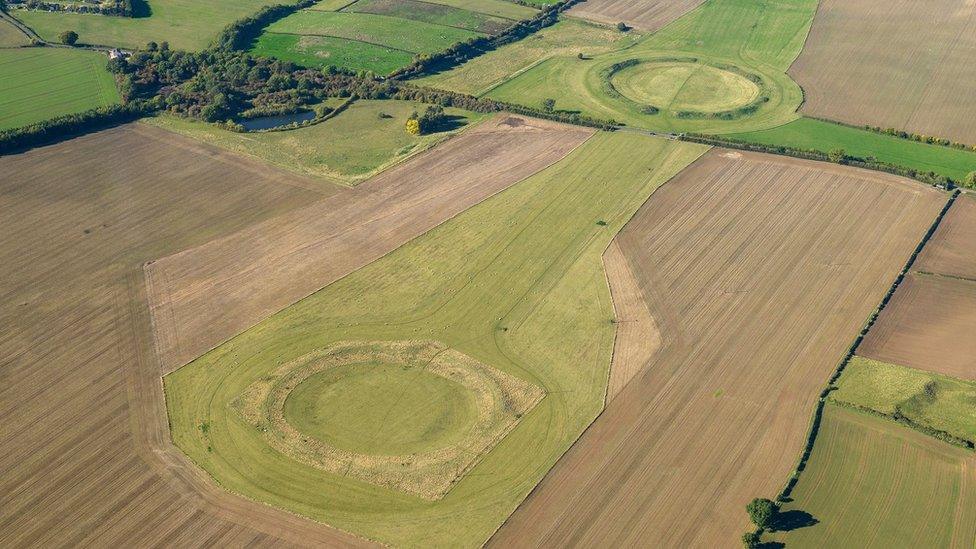Thefts of historic stone and metal on the up across England - report
- Published

Essex Police Heritage Crime Officers patrol Colchester Castle in Essex
Thefts of historic stone and metal are on the rise, according to a new report by Historic England and the National Police Chiefs' Council.
It sets out how walls and paving slabs were stolen in Yorkshire and Cheshire, while granite troughs and fountains were taken in Kent and London.
Meanwhile, metal thefts from church roofs were particularly common during the Covid lockdowns, the report added.
Historic England said such thefts "rob us of our collective history".
The research into the scale and extent of heritage and cultural property crime was carried out between February 2020 and February 2023, according to the report.

Lead was stolen from St Mary's Riccal in North Yorkshire, according to the report
The theft of York stone, a popular material for construction, building and landscaping, was highlighted as a major issue.
These types of stone slabs were being taken from the grounds of historic properties, including churches, the report said.
They could cost up to £400 per square metre to replace, church insurance specialist Ecclesiastical Insurance suggested.
Thefts from historic sites, which rose 9% in 2022, were usually carried out by thieves disguising themselves in high-vis jackets to appear as workers - and gangs often removed items using stolen vehicles and tools, the research showed.
Thefts of York stone highlighted in the report included one case in summer 2019 when several paving slabs were stolen from a 200-year-old Grade I-listed bridge over the River Aire in Knottingley, West Yorkshire.
Meanwhile, an organised gang of three men was sentenced for stealing more than £100,000 of York stone from eight historic churches in Cheshire, Lancashire, Derbyshire and Staffordshire between January and March 2022, with one of the men involved jailed for a total of four years.

Lead theft from church roofs is being carried out by "opportunistic offenders" and organised crime groups, the report says
The research, carried out by crime analysts at Opal, the National Crime Intelligence Unit for Serious Organised Acquisitive Crime, also suggested that metal theft from historic places of worship had increased during the Covid-19 lockdowns, but had since fallen again following enforcement action.
According to the Historic England report, the most common type of metal to be stolen from roofs was lead, particularly from historic churches.
During the Covid pandemic, these thefts increased by 41% and were carried out by both "opportunistic offenders" and organised crime groups.
However, between January and November 2023, the theft of lead from church roofs fell again by just over 26% compared with the same period in 2022, the report said.
Some listed historic churches had replaced their stolen lead with stainless steel, not least because lead prices had risen 8% between January and November 2023, Historic England added.
The report suggested that the theft of valuable heritage materials and cultural objects was likely to continue due to the cost of living crisis.
But it also pointed out there had been an almost 9% fall in cases of unlawful metal detecting - otherwise known as "nighthawking" - in the period covered by the report, though the practice still continued.
In one case in January this year, four men were sentenced at Hull Crown Court for unlawful metal detecting on farmland near Hayton in East Yorkshire.
A gang from Tameside had also been sentenced after admitting unlawful metal detecting at Beeston Castle in Cheshire and Roche Abbey in South Yorkshire in May 2021, the report said.

Other crimes are also highlighted in the Historic England report, including graffiti sprayed onto ancient remains in Chester
A key recommendation of the report by Historic England was the need to introduce appropriate police systems to better record, collate and analyse crimes and incidents of loss and damage at heritage and cultural sites.
Duncan Wilson, chief executive of Historic England, said the latest research marked the next stage in its commitment to tackle such crime.
"More effective crime recording across all police forces in the UK, including a heritage marker to highlight protected sites and cultural property crime, would help us to understand trends better and to tackle serious organised crime and anti-social behaviour," he said.
Assistant Chief Constable Rachel Nolan, the National Police Chiefs' Council lead for heritage crime, said more research into metal, stone and other items being stolen would be welcomed "to help us better understand the issue".
"We are committed to tackling this issue and our heritage crime officers across the country will continue to work with Historic England and other partners to reduce offending and educate the wider public about the long-lasting damage heritage crime can have," she said.

Follow BBC Yorkshire on Facebook, external, X (formerly Twitter), external and Instagram, external. Send your story ideas to yorkslincs.news@bbc.co.uk, external.
- Published9 February 2024

- Published28 July 2022

- Published22 December 2022
